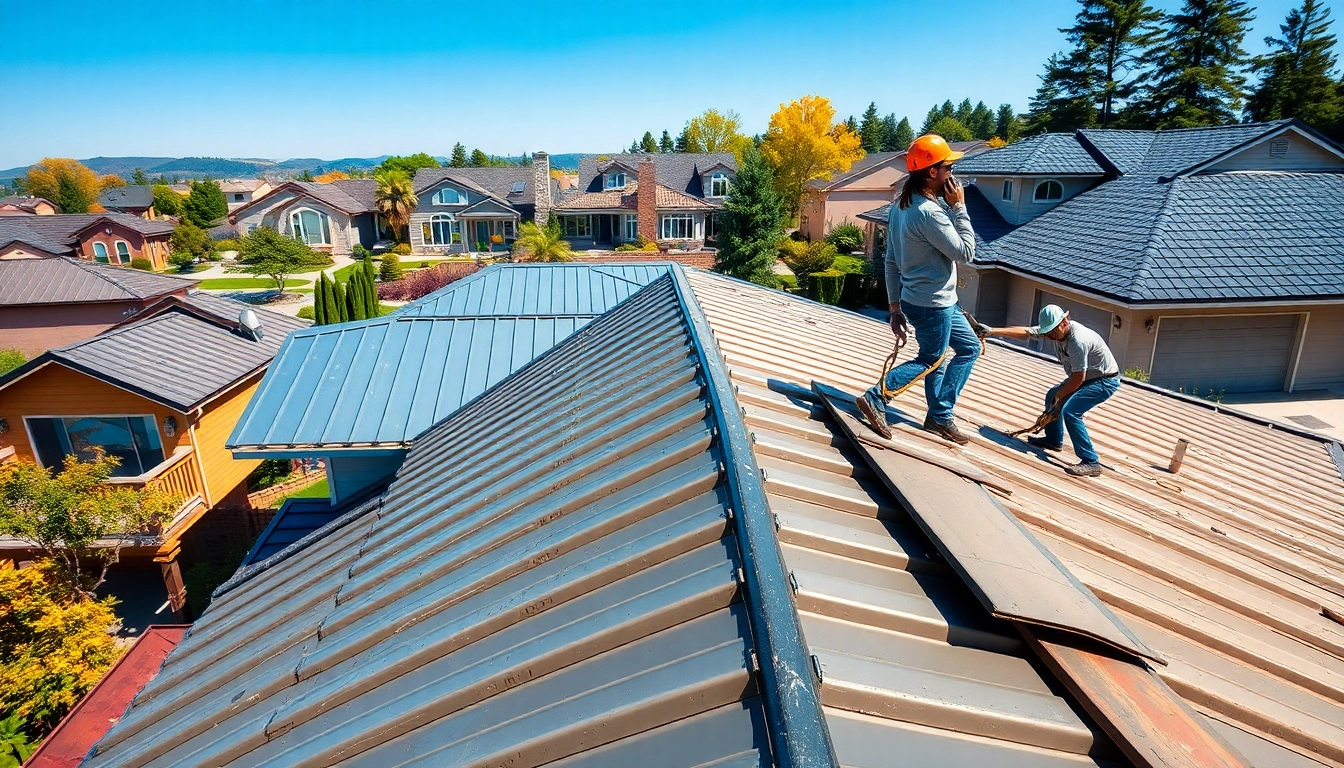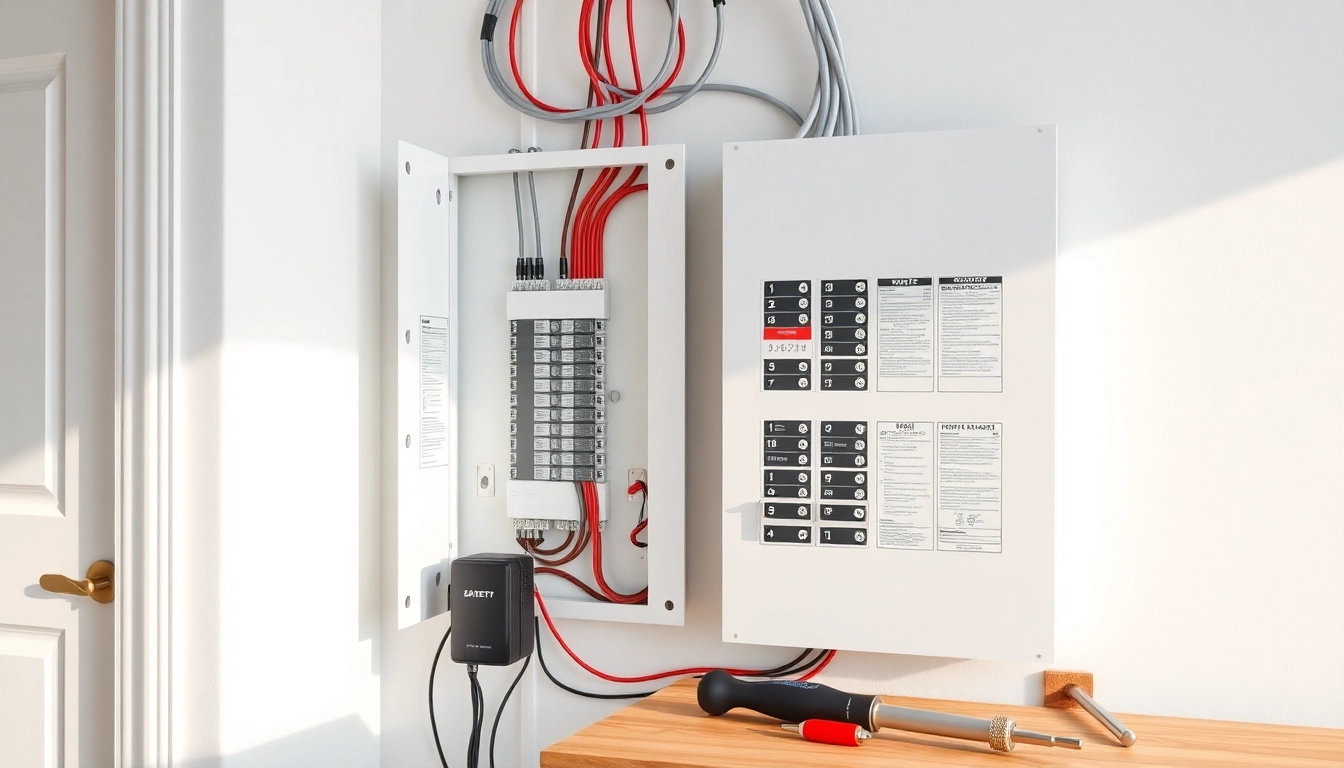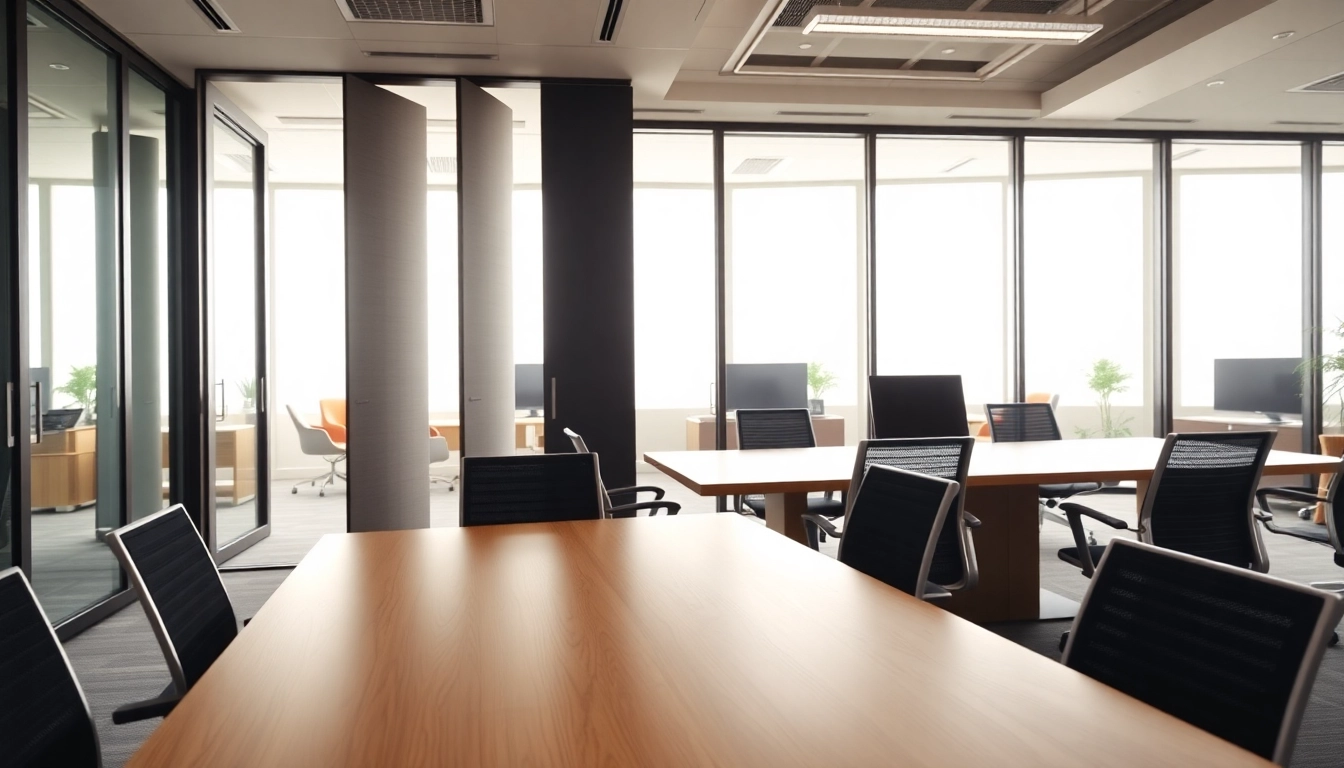
Understanding Residential Metal Roofing
What is Residential Metal Roofing?
Residential metal roofing has gained substantial traction over the past few years, emerging as a favored choice among homeowners seeking durability, aesthetic appeal, and energy efficiency. Unlike traditional asphalt shingles, metal roofing systems use a variety of metal materials, including steel, aluminum, copper, or zinc, to create roofing panels that can withstand extreme weather conditions and offer excellent longevity. The construction consists of interlocking panels that are both functional and attractive, providing homes with an added layer of protection against the elements.
Homeowners considering investing in residential metal roofing should understand how these systems not only enhance the structural integrity of their homes but also contribute to sustainability by being recyclable and having a longer life span compared to traditional roofing materials.
Common Materials Used in Metal Roofing
The materials utilized in residential metal roofing can significantly influence performance, aesthetics, and cost. Here are some of the most common materials:
- Steel: One of the most widely used materials, steel roofing is fortified with a protective zinc coating, referred to as galvanized steel, and is known for its strength and resistance to impact and weather.
- Aluminum: Naturally resistant to rust and corrosion, aluminum roofing is lightweight, making it easy to install. It’s particularly popular in coastal areas where saltwater exposure is a concern.
- Copper: Renowned for its beauty and longevity, copper roofing develops a patina over time that not only enhances its aesthetic but also protects it from corrosion.
- Zinc: Similar to copper, zinc is another durable option that naturally protects itself from weathering through a self-healing process, thus extending its lifespan.
Advantages of Residential Metal Roofing
Investing in residential metal roofing provides several compelling advantages that can enhance your home’s value and performance:
- Durability: Metal roofs are designed to withstand severe weather, including high winds, hail, and heavy snowfall. They can last 40 to 70 years with proper maintenance, significantly outlasting traditional roofing materials.
- Energy Efficiency: Metal roofing reflects solar heat, which can reduce cooling costs by 10-25%, making them an energy-efficient option, particularly in warmer climates.
- Low Maintenance: Unlike traditional roofing systems that may require regular repairs and replacements, metal roofs require minimal upkeep, typically just a routine inspection to ensure no debris accumulation.
- Environmentally Friendly: Many metal roofing options are manufactured from recycled materials and are themselves recyclable when they reach the end of their lifespan, making them a sustainable choice.
- Aesthetic Variety: Metal roofs come in various styles, colors, and finishes, allowing homeowners to choose options that align with their design preferences and enhance their home’s curb appeal.
Types of Residential Metal Roofs
Standing Seam Metal Roofs
One of the most popular metal roofing types is the standing seam metal roof. This design features vertical panels that are fastened together at the seams—hence the name—which are slightly raised above the panels. This unique construction reduces the potential for leaks and enhances water drainage. Standing seam roofs are particularly prized for their clean lines and modern aesthetic, making them suitable for a wide array of architectural styles.
Furthermore, these roofs are available in multiple materials, such as steel or aluminum, and are often coated with finishes that provide long-term protection from UV rays, rust, and corrosion.
Corrugated Metal Roofing
Corrugated metal roofing has a distinctive wavy pattern, which not only gives it a unique appearance but also reinforces structural strength. This roofing type is commonly used on agricultural buildings but is increasingly seen on residential properties due to its durability and affordability. It is typically made from galvanized steel, providing excellent resistance to harsh weather conditions.
Although the corrugated profile offers a more industrial look, homeowners can choose painted finishes or colors to enhance compatibility with traditional or contemporary designs.
Metal Shingles and Tiles
For homeowners looking for a more traditional appearance, metal shingles and tiles are excellent options. They mimic the look of traditional roofing materials like asphalt shingles or slate while offering the durability of metal. These products can often be found in various styles and colors, providing flexibility in design while retaining the functional benefits of metal roofing.
Metal shingles and tiles are often made from steel or aluminum, and many manufacturers offer options that are coated for improved longevity and aesthetic appeal. They provide a visually appealing alternative to conventional roofing materials, giving homes a unique and upscale look.
Installation Process for Metal Roofing
Preparation and Planning
Before installation, careful planning and preparation are essential to ensure the longevity and effectiveness of the roofing system. Here are the steps that homeowners should consider:
- Assessment: Evaluating the existing roof structure to determine if it needs repairs or replacement before installing a metal roof is crucial for a successful project.
- Choosing the Right Product: Selecting the appropriate type of metal roofing material and color based on the home’s architectural style, climate, and personal preferences is essential for functionality and aesthetics.
- Permits: Checking local building codes and obtaining any necessary permits prior to installation can avoid potential complications later on.
Choosing the Right Roofing Contractor
Finding a qualified and experienced roofing contractor is pivotal to the success of your metal roofing installation. Homeowners should consider interviewing multiple contractors, checking their references, and researching reviews to ensure they hire a reputable professional. Inquire about the contractor’s experience specifically with metal roofing, as this can vastly influence the installation quality and performance of the roof.
Installation Steps Explained
The installation of a residential metal roof involves several systematic steps:
- Removing Existing Roofing: If applicable, the existing roofing must be removed to allow for the new installation to take place on a clean surface.
- Installing Underlayment: A protective layer, such as synthetic underlayment or felt, is laid over the roof deck to prevent moisture intrusion.
- Setting Flashings: Flashing installation around chimneys, vents, and edges is vital for preventing leaks.
- Installing the Metal Panels: Depending on the type of system, panels are secured to the roof deck, ensuring they’re fastened according to the manufacturer’s specifications.
- Inspections: Conducting post-installation inspections ensures that everything is adequately sealed, fastened, and properly aligned.
Cost Considerations for Metal Roofing
Average Costs of Residential Metal Roofing
The cost of residential metal roofing can vary significantly based on materials, design complexity, and geographic location. On average, metal roofing installations range from $7 to $14 per square foot, including materials and labor. For a typical 2,000-square-foot home, total installation costs might range between $14,000 and $28,000.
While this initial investment may seem high compared to traditional asphalt shingles (which can range from $3 to $5 per square foot), it’s important to consider the long-term return on investment that metal roofs provide.
Long-term Savings and ROI
Metal roofs tend to offer substantial long-term savings compared to traditional roofing materials. Homeowners can save on energy costs, as metal roofs reflect solar heat, significantly lowering cooling expenses. Additionally, many insurance companies offer premium discounts for homes with metal roofs, recognizing their durability and fire resistance. Over time, the lifespan of a metal roof can lead to savings that offset the initial costs.
Factors Influencing the Cost of Installation
Several factors can influence the overall cost of installing a metal roof, such as:
- Material Choice: The type of metal used (e.g., aluminum, steel, copper) can have a significant impact on both aesthetic and cost factors.
- Roof Complexity: Roofs with multiple angles, valleys, or features can increase labor costs due to the additional time and materials required.
- Geographic Location: Prices for materials and labor can vary by region, influenced by local market conditions.
Maintenance and Longevity of Metal Roofs
Routine Maintenance Tips
While metal roofs are known for their durability and low maintenance requirements, periodic inspections and preventive maintenance can help extend their lifespan:
- Regular Inspections: Conducting inspections at least twice a year, especially after severe weather events, can help identify and remedy minor issues before they escalate.
- Clean Gutters: Maintaining clean gutters and downspouts ensures proper drainage and prevents water pooling that could damage the roofing system.
- Remove Debris: Clearing leaves, branches, and debris from the roof surface can prevent moisture buildup and algae growth.
Signs Your Metal Roof Needs Repair
Knowing the signs that indicate repair needs can help homeowners avoid costly fixes later:
- Water Leaks: Any signs of water stains or leaks inside the home can indicate roof damage requiring immediate attention.
- Punctures or Dents: Inspecting the roof for any visible punctures, dents, or rust spots is essential, as these can compromise roof integrity.
- Loose or Missing Panels: Regular inspections can help identify if any panels are loosened or missing, which should be addressed promptly.
Lifespan Expectations and Warranty
Metal roofs are designed to last, with lifespans generally ranging from 40 to 70 years, depending on the material and installation. Manufacturers often provide warranties ranging from 20 to 50 years, covering defects or issues related to workmanship. It’s crucial for homeowners to understand their warranty coverage fully, including maintenance requirements and limitations to ensure the longevity of their roofing system.






